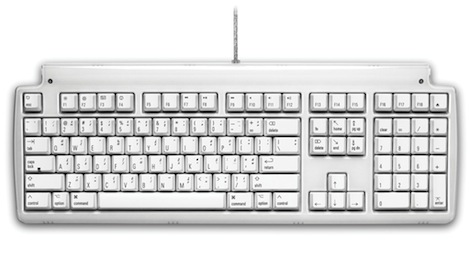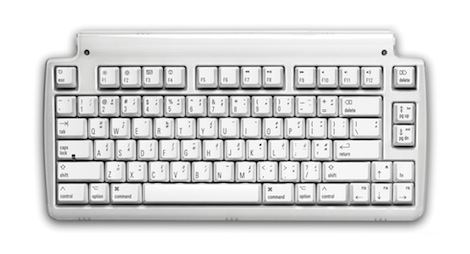January 10, 2013
Written by Jim Dalrymple
Empty states are places in apps that have no content or data. They are empty. A blank page. Traditionally empty states are overlooked as most designers focus on how best to display lots of content or data.
Great article. When I see an app where the empty pages have seen some attention, I’m confident that the designer has thought about the details of the app. Strangely, it’s these pages that often make you feel like the designer missed something.
Written by Jim Dalrymple
While Apple released one new iPhone last year, Samsung let loose a whopping 37 different phone variations. (For those keeping score, HTC released 18, Nokia introduced nine, and LG launched 24.) Certainly good hardware design played a role in Samsung’s healthy sales. But it also didn’t hurt that the company flooded the market.
Apple puts all of its efforts into making one great product for users. Clearly everyone else is just throwing as much at the market as they can.
Written by Peter Cohen
Matthew Panzarino for The Next Web:
Apple SVP of Worldwide marketing Phil Schiller gave an interesting interview to Chinese newspaper Shanghai Evening News yesterday. In the interview, he directly addresses the rumors surrounding a potential cheaper iPhone, saying that this will ‘never be the future of Apple products’.
This doesn’t entirely discount the possibility that Apple is looking to move into emerging markets, but Schiller’s comments reinforce Apple’s image as an innovator rather than a mass-market supplier.
Written by Peter Cohen
Rebecca J. Rosen’s well-intended editorial in The Atlantic suggests that the right course of action to promote gender diversity at tech conferences is to simply boycott the ones that feature all-male speaker lists. The editorial has been bouncing around the blogosphere since it was posted last week, and Rosen’s comments are a response to a larger debate about gender diversity that’s been bouncing around the tech industry for some time.
Brittany Tarvin, in an editorial on her own Tumblr blog, thinks this is the wrong approach and offers more constructive suggestions, like mentoring a minority in your own personal network to speak on topics they’re knowledgeable and passionate about, and advocate for them to be part of the speaker list at conferences you attend or are interesting in.
Tarvin’s point, if I’ve interpreted it correctly, is that in order to affect change, sometimes it’s more important to act positively than it is to just say no.
If the topic interests you, make sure to read both posts and feel free to share your thoughts with us.
Amazon.com on Thursday announced the launch of AutoRip, a new service that gives customers free MP3 versions of audio CDs they’ve already purchased. The tracks are available for download through Amazon’s Cloud Player service. What’s more, this applies to CDs you’ve bought through Amazon as far back as 1998.
The files are presented in MP3 format, encoded at 256 Kbps. If you’re concerned with your Cloud Player library suddenly being populated over capacity, don’t worry – Amazon says the new files don’t count against Cloud Player storage limits. The new files should be visible immediately the next time you log into your Amazon Cloud Player account.
Not all audio CDs purchased from Amazon.com are eligible for the AutoRip treatment. The company counts the number now in the thousands. A new graphical embellishment is used on Amazon.com catalog pages to signify whether the CD is eligible for AutoRip.
Amazon also used the opportunity to take a swipe at Apple. “In many cases, customers can buy an AutoRip CD, including the free digital copy, for less than they would pay for only the digital album at iTunes,” the company said in a statement.
[Editor’s note: A quick check of my own Cloud Player account shows hundreds of new tracks in the “recently added” section, including many that for whatever reason, I haven’t ripped to my iTunes library. Nifty!]
Written by Jim Dalrymple
Jim and Dan discuss people’s expectations of Apple now and in the future and the top stories coming from Consumer Electronics Show (CES).
Sponsored by Hover (use code DANSENTME for 10% off), Harvest (use code 5BY5 for 50% off), and Lynda.
Written by Peter Cohen
Dave Masters, The Sun:
A pub has started serving 150oz supersized steaks – ten times bigger than your average portion and believed to be the largest in the world.
The outrageous rumps are 12 inches wide, 12 inches long and four inches thick.
They tip the scales at 9lb and more than half a stone – about the same weight as a newborn baby.
Glad to see gluttony isn’t a uniquely American virtue.
Written by Jim Dalrymple
The only explanation is that the people doing the social media hate their own company.
Written by Jim Dalrymple
I agree with Michael. If you do a review, don’t waste your readers time.
Written by Peter Cohen
Philip Michaels for TechHive:
In a world where dozens of games can fit on a device tucked neatly into your pocket, why would you want a pinball machine to call your very own? Because pinball machines are undeniably awesome. And the machines made by Stern Pinball fit very nicely into your home.
One of the first truly awesome, “OMG I WANT THIS” things I’ve seen from CES coverage this year. Seems like the perfect addition to a man-cave, play room or just about anywhere in the house I’d like to hang out for a few hours.
Now, which one of my kids do I sell to organ harvesters to come up with the money? Decisions, decisions…
Written by Peter Cohen
Joseph Leray for Touch Arcade:
Let’s clear the air: clean lines and futuristic stylings aside, Pixelbite Games’ Repulze [$0.99] shares little in common with Wipeout. One is an iOS racer that costs less than a dollar, the other is one of Sony’s most popular and enduring racing franchises. That’s not to discount Repulze, though — it’s from the same team that developed the excellent Reckless Racing 2 [$1.99]. Whereas RR2 included drifting mechanics and a dynamic difficulty system, Repulze is comparatively stripped down: it only does one thing, but it does it really well.
So begins a very thorough review of a new racing game I downloaded the other day from the App Store. I’m having a lot of fun with it and it looks like Leray did too. If you’re fond of fast and furious futuristic racing games, there’s a lot to recommend there. Check out Touch Arcade’s review.
Written by Jim Dalrymple
The company put together a little slideshow of the high points from last year. Some fascinating numbers.
Written by Jim Dalrymple
And you think delays traveling today are bad.
Hot on the heels of their recently-introduced Laptop Pro, mechanical keyboard maker Matias on Wednesday took the wraps off two new Mac-compatible keyboard offerings – the latest revision to their venerable Tactile Pro series and the new Tactile Mini. The Tactile Pro 4 ships today for $150 while the Mini Tactile Pro will cost $130 when it goes on sale in February.
Both keyboards share common design elements – mechanical keyswitches manufactured by ALPS and Mac-standard layouts, with sculpted, laser-etched keys printed with symbols accessible using Option and Shift-Option key combinations. They also sport three USB 2.0 ports to attach additional peripherals. Both are made in white plastic.

Matias likens the keyfeel of the Tactile Pro keyboard to Apple’s legendary Extended Keyboard, considered by many Apple enthusiasts to be the best keyboard Apple ever made. Mechanical keyswitches are louder than the ones found on today’s Apple laptops and with Mac desktop machines, but they offer better accuracy and a more precise tactile response than those other keyboards.
The Tactile Pro 4 is a full-sized keyboard equipped with navigation keys and a numeric keypad. Unlike its predecessor, the Tactile Pro sports function keys mapped to Apple-standard capabilities like screen brightness, volume, iTunes and more.

The Mini Tactile Pro sports the same keyfeel as its big brother, but in a smaller package. It’s a tenkeyless layout (it eschews a numeric keypad), but it maintains page up, page down and arrow keys, as well as a forward delete key.
Written by Jim Dalrymple
In one of the first usability tests I ever did, I met a lovely old lady who could not use a mouse. She kept lifting it in the air and pointing at the screen, speaking words of encouragement to the cursor. At the end of the test I got absolutely nothing, but she did think I was a “lovely boy” who should meet her granddaughter. Very quickly I learned the value of setting very clear criteria for participant recruitment.
That’s classic. Thankfully Damian Rees offers some tips to improve your results.
Written by Jim Dalrymple
You have to admit being a “Freelance sperm donor” is unique.
Written by Jim Dalrymple
Great article from Gannon Burgett.
Six years ago today Apple unveiled the iPhone (though it wouldn’t be available to buy until that summer). The device has had a profoundly transformative effect not only on Apple but on the entire mobile phone industry.
Hard to believe it’s only been six years.
Written by Jim Dalrymple
Creative block, writers block or whatever you call it, is a terrible thing to overcome. It’s that point when your mind will just not think, not let any ideas or words through this giant wall it’s erected in your mind. Stacey Kole offers some ideas on how to get around it.
Walmart and Straight Talk Wireless have announced plans to offer both the iPhone 4 and iPhone 5 to Straight Talk customers for $449 and $649 respectively. The phones should hit Walmart stores next week, beginning January 11, 2013.
As you may have gleaned, the price of the iPhones is unsubsidized – buyers are paying the full price for an unlocked phone, as there’s no long-term service contract involved. Straight Talk Wireless, a joint venture between mobile virtual network operator (MVNO) Tracfone and Walmart, offers iPhone users pre-paid contract-free plans starting at $45 per month. If that price sounds steep for the average Walmart customer, the company is offering a special no-interest fixed-monthly financing offer using the Walmart Credit Card, for $25 a month.
Straight Talk already offers simple phones, feature phones and Android-based smartphones for its customers, but this marks the first time it’s offered its own iPhone. The iPhones Straight Talk will offer are CDMA models (Straight Talk operates on both CDMA and GSM networks.)
Straight Talk Wireless also offers users a “BYOD” (Bring Your Own Device) plan that enables them to use an existing GSM-equipped iPhone on their network. [Editor’s note: In fact, just yesterday I resurrected my AT&T iPhone 4 for my wife to use via Straight Talk. I’ll post more after we’ve had a chance to see how well it works.] A Walmart spokesperson confirmed for The Loop that the Straight Talk iPhones will operate without some of the limitations imposed on BYOD users (On BYOD iPhones, Visual Voicemail isn’t supported; MMS doesn’t work unless you jailbreak the phone, though SMS works without issue).
For $449 users get an 8GB iPhone 4 in either black or white, and for $649 users can get a 16GB iPhone 5 in their choice of black or white.
[7:47 AM: Added information about network and feature support]
Written by Jim Dalrymple
What a fascinating story.
Written by Jim Dalrymple
Kind of the opposite of Steve Jobs’ reality distortion field.
Written by Peter Cohen
Chris Welch, The Verge:
AT&T drew particular criticism, with Legere — like so many others before him — labeling Ma Bell’s network as “crap” in New York City. Verizon didn’t come out unscathed either, with Legere joking, “the way they covered those dust bowl states with LTE I think is admirable.” Shared data plans also came under fire. “A 5-gigabyte, 10-device shared data plan, when Joe Schmoe Jr. starts to watch porn on his phone, isn’t gonna work.” And even after crediting Verizon’s network as “beautiful,” he concluded “they’re not the cool company.”
That’s great. I’ll be more impressed when T-Mobile’s coverage in my area isn’t spotty as hell.
T-Mobile plans to sell the iPhone this year. The company is also doing away with phone subsidies, requiring users to pay the full price of their new phone up front, but allowing them more flexibility to end service without paying huge early termination fees.
Written by Peter Cohen
T.C. Sottek for The Verge:
We just sat down for a rare and wide-ranging interview with Valve CEO Gabe Newell, who opened up to The Verge with details about the company’s upcoming “Steam Box” gaming hardware, the future of the Steam digital distribution platform, and even gaming itself. For starters, Valve isn’t just attacking the living room; the Steam Box will be designed to work across multiple screens in the home using networking standards like Miracast, ideally allowing users to effortlessly transition between rooms and monitors to enjoy gaming and other content. But Valve’s goal isn’t just to put a box into everyone’s living room, it’s to help build an ecosystem of content developers — including the gamers themselves.
An interesting interview with the ever-influential and visionary Gabe Newell. He offers up details about what Steam is planning with its own hardware. Some Mac press have repeated a line that he threw out about Steve Jobs being hostile to games, but it’s a one-off and really irrelevant to the larger issues that he tackled. If you’re a gamer and what Valve is doing with Steam interests you, make sure to take a gander.



